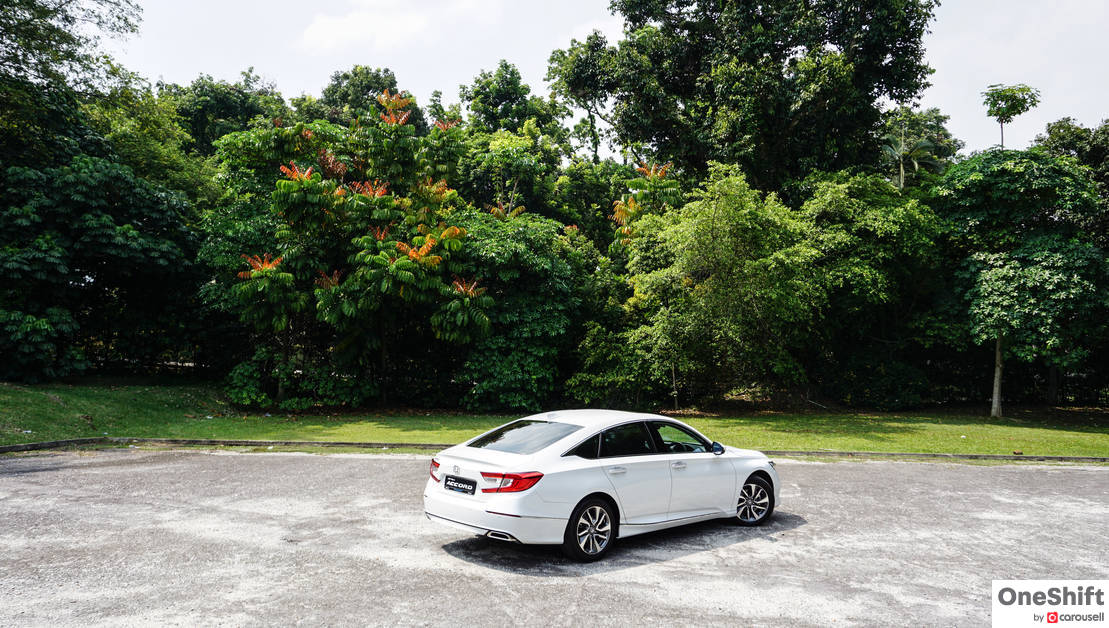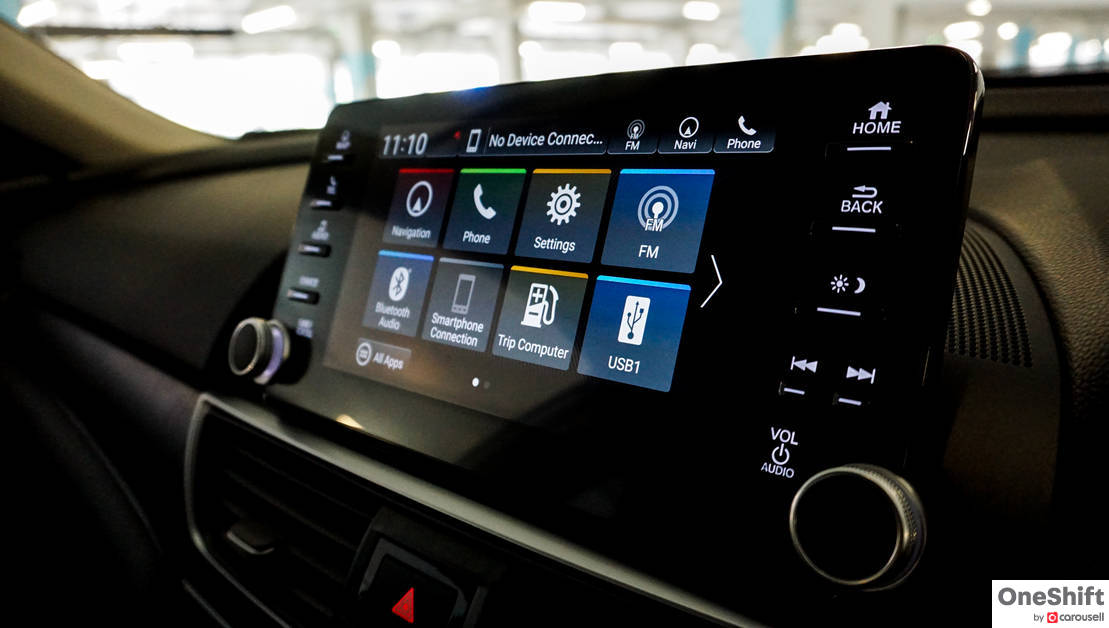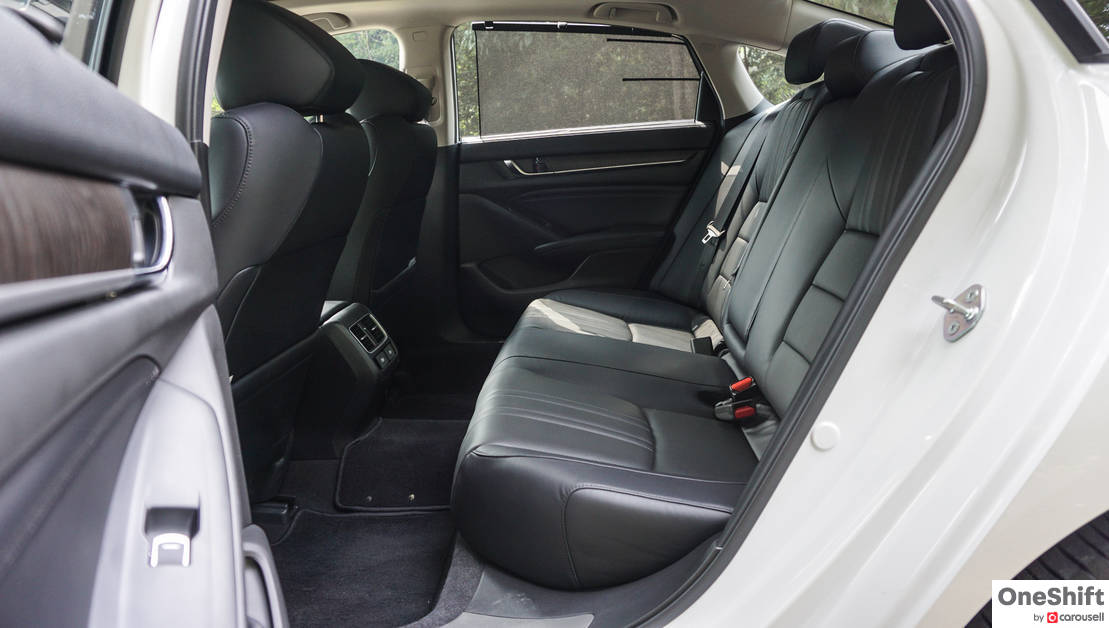Top Ten Hit
The 10th generation Accord was recently unveiled in Singapore, now with a downsized 1.5L turbocharged engine and rakish looks. We take it out for a test drive to see if it's still one of the best Japanese executive saloons in the segment.


Ten generations of the Honda Accord is proof that it has definitely gotten the right formula. Together with the Civic, it was where Honda built its reputation for reliable and well-engineered cars. Always being a tad more driver focused than its rivals, Honda has nonetheless slowly shifted the positioning of the Accord towards luxury to give it more mainstream appeal.

Today, Honda has to meet the demands of stricter emissions regulations and thus introduced the Accord with its first ever turbocharged engine. At 1,481kg, the car now weighs lighter than before, bucking the trend of expanding waistlines of new models. Honda also made the car more aerodynamic, 3% more to be precise.

The result is the car sits wider and lower, yet with a shorter overall length and a longer wheelbase. All this results in an Accord that has true eye-catching presence. The flowing roofline, reminiscent of the Civic’s design, gives the car a rear-heavy stance, almost giving the false hint that power is driven to the rear wheels. It is, in fact, front-wheel driven, like all of the past Accords sold in Singapore.

The C-pillar crescents down to form a little awkward kink at the base of the greenhouse above the rear wheels, certainly an interesting design feature to talk about rather than conventional lines. The rear boomerang tail lights also draw attention, although they can look unfinished from some angles.

The front end design is exquisitely modern, with virtually all lights in LED. The headlights in particular is lined, wing-shaped, like jewelry. Perhaps more so than any Accords in recent memory, Honda has managed to keep the design fresh and, more importantly, engaging to look at.

Although feeling business-like, sitting in the Accord is veritably a premium experience. The driver’s seat is comfortable and offers 8-way adjustment and memory, although it lacks ventilation or a massage function. The instrument panel is part digital and part analogue, clearly very well thought through with menus easy to access and intuitive to use. All buttons are lit in a soft white glow.

The interior architecture is a blend of comfort and style, with a large 8-inch touchscreen display dominating the centre console. It is feature-packed, including Apple CarPlay and access to a variety of cameras including a self-parking function. There is inbuilt navigation as well but I think most users will just turn to Google Maps or Waze on CarPlay.

It felt like Honda drew inspiration from Mazda when it designed the air-conditioning controls, but it went one step further by making them feel expensive to use too. The buttons click reassuringly and the bezeled knobs turn assertively.

How does it feel like for passengers in the rear seats? Well, the back seat is hardly second-class. With generous legroom, factory rear window blinds, two USB ports and the ability to remotely adjusting the front passenger seat, rear passengers are pampered with the real estate and privacy. Accompanying friends commented that the rear space easily trumped that of a 5-Series and E-Class, which is no small feat. A common comment though was that the low roofline made ingress that bit more difficult.

Only some details give away that there is still a bit of work to do when it comes to utmost refinement - the wood trim when observed from far looks great but when touched, feels plasticky without any texture. The gear lever action is also a bit rough, if not crude. The flipside though is that it all feels oh so robust.

It’s usually the basics that Honda gets so right: it didn’t take long for me to figure out everything to operate the car, even though I haven’t driven a new Honda in years. The positioning of the seats, pedals and steering wheel is also all spot on.
The 1.5-litre VTEC Turbo produces an impressive 201PS and 260Nm, the latter from 1,600rpm. When one first starts the engine, it idles with a distant vibration, not something you can’t live with but it is definitely noticeable. It disappears as soon as the car gets moving though.

There is some disbelief that an engine so small can give motive force to such a large car so effortlessly. Yes there is some lag, due to the CVT and especially with a full load of passengers, but most of the time you will not find a lack of power. Put it in Sport mode and the CVT programs to hang on to gears longer and respond even quicker.

Only accessing the top end of the rev range brought in a fair amount of engine roar into the cabin. Even then, some of the noise does resemble the VTEC engines of old, although most of the time you rather do without it, especially in a car like the Accord. Otherwise, the engine is hushed most of the time, working well with the sophisticated CVT to respond to throttle inputs faster than you would expect of a gearbox of this type. Seriously, critics of the CVT have less reason to complain about these days with the latest generation of CVTs. They work really well in Singapore driving and the majority of the time, you don’t even realise the benefits of a torque converter or dual-clutch gearbox.

The car acquits itself very well as a luxury car, no doubt with some technology at play: Active Noise Control (ANC) employs microphones that cancels out noise in the interior, while the innocent looking rims actually come with resonators to suppress unwanted sounds. The car cruises with a very relaxed gait, helped also by a great view out thanks to the blind spot monitor which can be activated on demand from the turn indicator stalk.

When you show the Accord some corners though, it plays a surprisingly eager game. With torque coming in at a strong wave from the turbocharged engine, it is enjoyable to put the car through its paces, unhindered by the excellent CVT. The handling is confidence inspiring, thanks to clarity through the steering despite its lightness. It feels like the wheelbase shortens when you drive faster, possibly a result of the variable ratio rack.

Even though the car rolls a fair bit, it is well-controlled and as long as you stay within reason of the comfort-biased tyres, the Hyundai Sonata taxi tailing you wouldn’t be able to see which way you went. Yet despite this, the car delivers excellent road manners and can munch the miles on the highway easily. The suspension is expertly damped, although it leans towards the comfort side of things - absolutely the right decision for this class of car.
Honda has built a thoroughly engineered car, something that it has always been good at, and this is one of their better efforts. I really like that the car is not just a great daily driver suited for the family, it is also fun to drive when you want to take the long way home by yourself. I also appreciate that there is a lot of technology but most of it functions unobstructedly in the background, allowing a layman to take the wheel very easily - par for the course for Honda. It also has massive rear legroom and a huge boot, even though the car is physically smaller than before. The packaging is just so clever.

It is a strong comeback to this competitive segment, where the Accord takes the fight to not just with other saloons but also the ubiquitous SUV. It is priced a little higher against the Toyota Camry at press time, although it does come with an engine that attracts less tax. The Skoda Superb and Volkswagen Passat presents incredible value next to their Japanese rivals and are well worth considering too. However, if compared spec for spec, the margin gets that much closer as the Accord is very generously specified with hardly anything left wanting.

It’s the tenth time the Accord has come to the market, but this one is definitely a hit.
Credits: James Wong








Get the Best Price for your used car
from 500+ dealers in 24 hours

- Convenient and Hassle-Free
- Consumer Protection
Transparent Process
With No Obligation







